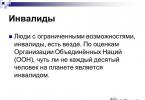Hi people! Have any of you wanted to learn how to sit on the twine? There are such? Personally, I have never had such a desire, although I have always admired it. It's really cool when a person can sit on the splits. But I still started to get involved in stretching at the age of 20-22, I don’t remember exactly.
I even specifically began to set aside time after training with iron to stretch properly. I didn’t really like it, of course, especially since my training with iron could last for 2 hours. In the end, you are already tired and in order to pay attention to stretching, you had to make moral efforts. But I didn't last long.
The biggest motivation for me was the realization that stretching helps recovery and even muscle growth. By the way, you can read about it
Many girls dream of having a beautiful and flexible body. The highest indicator of this characteristic is the ability to sit on the splits - this is like the highest title that shows all your "cool" in this area.
The erroneous opinion of people that this is possible only up to a certain age or subject only to dancers or gymnasts, to some extent suppresses the desire to do it to the fullest.
Regular split stretching at home is a great goal. The game is worth the candle ... And here's why:
- stretching helps to strengthen the abdominal muscles;
- avoid problems with the genitourinary system;
- increase blood circulation in the limbs and pelvic organs, which is especially important during sedentary work;
- regular stretching at home helps relieve tension
- reduce the risk of injury and help keep fit for years to come.
There are few contraindications for this type of training, this includes only problems with the spine, knee joints and inguinal ligaments, as well as gynecological problems. In any case, if you have any doubts, consult your doctor.
- The main rule for beginners is not to try to sit on the twine in one day. The load should increase gradually.
- Each workout should begin with warming up the muscles. For this, jumping rope, running, cycling, leg swings are suitable.
- You definitely need to stretch. Even those who are already familiar with the twine technique should not neglect this condition.
- For maximum acceleration of results - you need to train in the morning and in the evening. It is most difficult to stretch in the morning, but this is the most effective, after it everything will go much easier in the evening, since by the end of the day the elasticity of the muscles will be at its best.
- Depending on the natural flexibility and regularity of doing exercises at home for stretching the twine, the result can please in 1-2 months. Elderly people can also achieve success, despite myths to the contrary, although this will take at least 6 months.
- You need to train regularly, preferably daily and give all your best. If you give up even for a few days, it will already be felt.
- If there is a sharp pain or pain in the spine, immediately stop exercising.
Twine stretching exercises usually include loads to help sit down on both transverse and longitudinal twine. But still, these two types of twine require different types of exercises, suitable not only for women, but also for men.
Cross twine
BENDING FORWARD FROM A STANDING POSITION. Get into the starting position - legs together, knees not bent. Lean forward without arching and arching your back, trying to reach the floor with your hands. Ideally, you should place your palms on the floor.
BENDING FORWARD FROM A SITTING POSITION. Spread your legs as wide as possible and lean forward until your chest touches the floor. Hands can be closed in the castle and stretched out in front of you or grab them by the ankles.
LUNCHES FORWARD. Bend one leg at the knee and put it forward, straighten the other and put it back. Squat as deep as possible, keeping your back straight.
Lunges to the side. Bend one leg at the knee, straighten the other. Transfer the load alternately on each leg, rolling from one limb to another. The back should be kept straight, and squats should be done as deep as possible.
Perform all exercises for transverse twine in 10-15 times in 3-4 sets. Hold in each position until 30 seconds.
Longitudinal twine
Exercises for this type of twine should be static in nature, that is, there are fewer jerks, pulsations, wiggles - this is dangerous with injuries and sprains. Here you need to be very careful.
EXERCISE 1. Bend one leg at the knee and put it as far forward as possible in front of you. Move the second back, resting your knee on the floor. Do not bend your back and fix the position. You can also perform smooth, springy rocking up and down until you feel discomfort. You can also raise your hands up if you feel more comfortable that way.
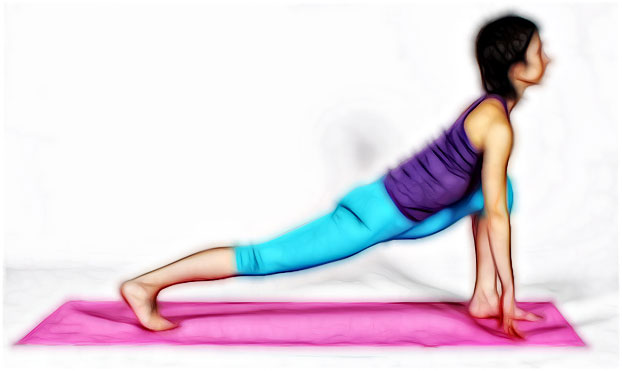
EXERCISE 2. The starting position is similar to the first one, now the leg put forward must be leveled, transferring the load to the pelvis. Make the maximum approach to the floor until you feel tolerable discomfort.
EXERCISE 3. You need to lie on the floor. Legs should be bent at the knees or straighten them. Raise one leg up, exhale, grasp the foot and pull it towards you with your hands. The sacrum remains on the floor, the knee is straightened. You should feel the lengthening of the back of your leg and tension in that area.
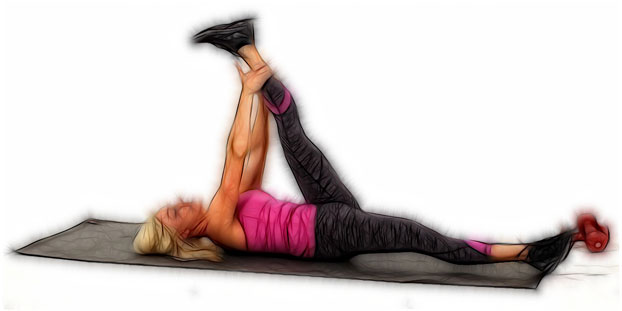
Do exercises for 10-15 times in 3-4 sets. Freeze in each position for 30-60 seconds.
Twine stretching with yoga
Yoga is a great example of how you can learn stretching at home. Exercises of this kind can not only bring you closer to your goal, but significantly improve the health and overall well-being of a person.
POSE OF THE PYRAMID. Stand straight, legs together, arms along the body. Put one foot forward, the second slightly back, shifting the weight on it. The distance between the limbs should be 90-120 cm. The foot in front should be turned outward, and the heel should be directed to the supporting heel. Bend forward, pressing your chest against your thigh, trying to reach your toes with your fingers, and then extending them beyond the foot to the maximum possible distance.
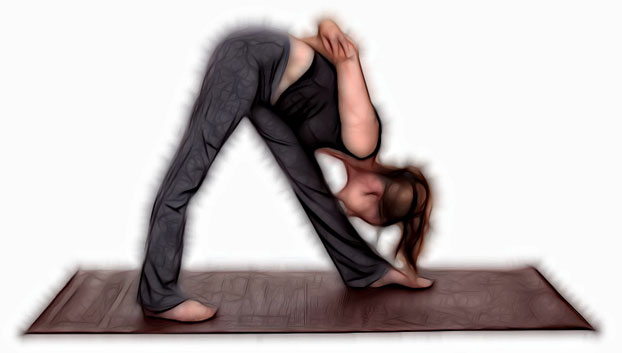
The exercise helps to stretch the legs, shoulders, back, strengthen the hips, improve posture and coordination. It also has a calming effect on the nervous system.
POSE OF THE LIZARD. Perform a lunge forward, bend your leg until the knee touches the ankle. Take the other leg back, pressing your knee to the floor. Transfer the support to the front leg, stretch your arms forward. Start reaching forward, trying to press your chest and forearms to the floor, and your back leg, straightening and pulling your heel back.
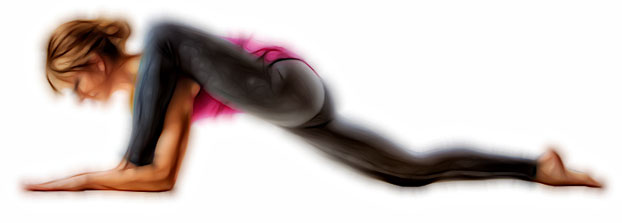
The exercise helps to stretch the hips, groin, abdominal muscles, shoulders and neck. It has a beneficial effect on lung function and chest expansion.
POSE OF THE DOVE. The exercise begins from a sitting position - one leg is straightened back, and the second is bent at the knee and lies parallel to the floor. In this case, the knee “looks” at one wrist, and the ankle at the other. Lower your pelvis forward with your torso, stretching your back leg. Stretch your arms in front of you, placing your chest on the floor.
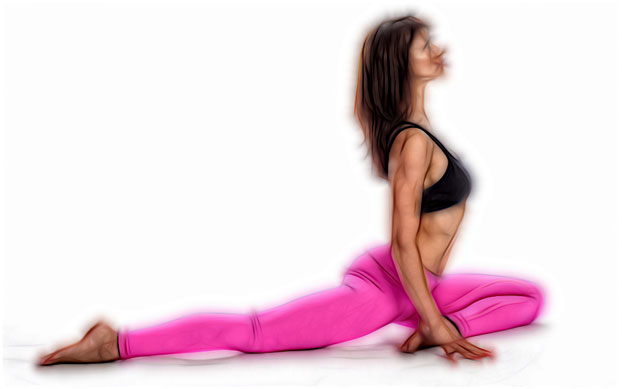
The exercise actively helps to stretch the groin, hips, abdomen, shoulders and neck. It has a positive effect on the pelvic organs.
Now you know how to sit on the twine at home without using any additional tools. You must prepare yourself that it will not be easy and the process will take at least a month or two at best. With poor physical fitness and unfavorable genetics for stretch marks, training can take up to 6 months.
In any case, the result will definitely be and will be worth all the effort.
comments powered by HyperCommentsP.S. Subscribe to blog updates not to miss anything!

